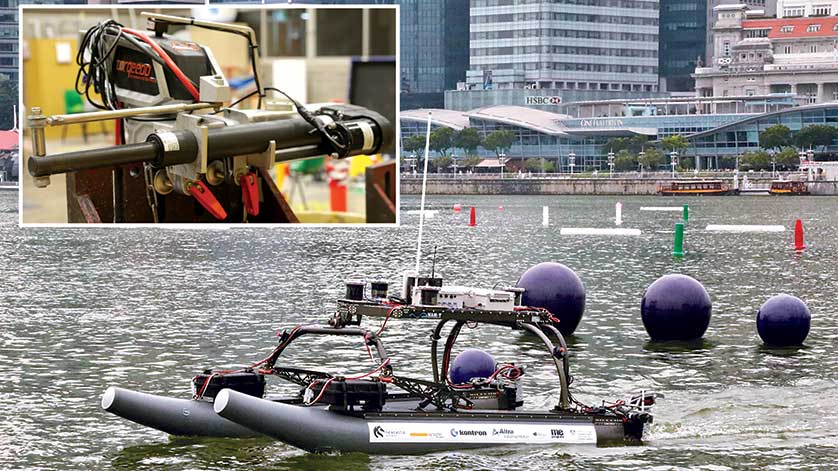Warner Linear Supports Biennial Competition for Marine Surface Vessels

Research and development into unmanned vehicles has made considerable progress in the past few years. Designing fully autonomous vehicles presents additional challenges since they need to share operational space with human-operated vehicles.
In an effort to advance the technology for marine surface vessels, a biennial competition is being held for universities to showcase their expertise; an endeavor that has been supported by Warner Linear.
The development of autonomous marine vessels and the technology required to operate them will bring significant benefits to applications in search and rescue, shipping security, environmental monitoring and marine science. Incorporating the latest technology and cutting edge software for the sensor systems with precise and reliable propulsion and steering arrangements will soon bring benefits to a number of applications.
15 university teams from five Pacific Rim countries, Australia, Japan, South Korea, Singapore and the USA, were set the challenge to design and build a highly capable unmanned surface vessel (USV) to complete against each other in the Maritime RobotX Challenge (MRC), held in Singapore.
One group of undergraduate and postgraduate students from the University of Newcastle in Australia, was chosen to take part in the competition and needed some assistance with the steering system of their USV. The challenge led them to Warner Linear, part of the Altra Industrial Motion Group, and a leading manufacturer of rugged service electro-mechanical actuators.
Each team was provided with a 16-foot (5 meter) Wave Adaptive Modular Vessel (WAM-V) that needed to be equipped with propulsion, guidance and sensors that would enable it to complete a set of predetermined tasks. Each challenge, which included detection and avoidance of obstacles, as well as an underwater search for an acoustic source, was designed to test the design and implementation of the sensors and control systems.
One of the more basic elements of the design are the propulsion and steering systems that have to be integrated with the vision and guidance systems so that the vessel can avoid obstacles. The team from Newcastle chose to design a linkage that turned the electric outboard motors using linear actuators.
Following some initial research, the designers contacted Warner Linear to discuss the challenge and find a solution. Based on the team’s design requirements, Warner engineers configured two identical K2x ball screw linear actuators, which operate at 24 VDC, with a 2,800 lbs (1,270 kg) load capacity. The 12” (300 mm) stroke and 5:1 gear ratio offered the required speed and torque to provide fast and accurate steering control, while the position feedback would provide the necessary information for the guidance software.
Nicolas Weightman, student team leader - hull mechanical and electrical comments: “While we didn’t win the competition, the pair of donated Warner Linear actuators definitely gave us the advantage of being able to outmaneuver most of the other teams. We wouldn’t have been able to run such a steering system without their help.”
The high quality K2x linear actuators are from Warner’s B-track range. They have been designed for use in tough, high-load applications where they will be in frequent use. The ball screw actuators are designed to provide years of trouble-free service in harsh, marine environments. They feature integral o-ring seals, bi-directional holding brake and Nitrotec treated end fittings for superior strength and corrosion resistance.
Models also feature heavy-duty, sealed double ball bearing motors and a mechanical torque limiter for end-of-stroke and overload protection. High performance, synthetic, lifetime lubrication is used throughout, while unique, patented screw-end bearing guides provide smooth extension operation, high side-load capability and aids screw re-lubrication.
Meanwhile, the new challenges have been set for all those taking part in the next RobotX competition, which will be held in Oahu, Hawaii, December 11-18, and the designs are well under way. The next generation of innovators will be creating designs that will help solve many of the problems associated with autonomous vehicles and develop solutions that will bring so many benefits to marine research.

